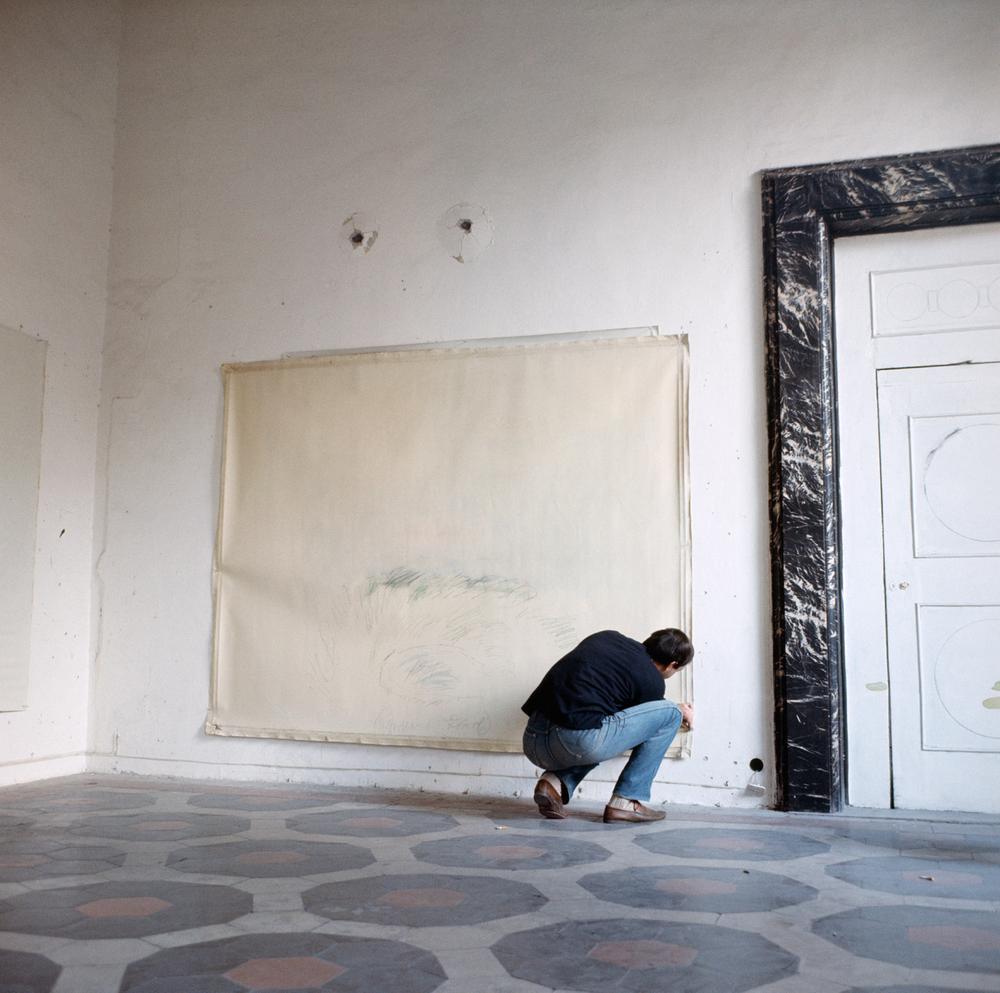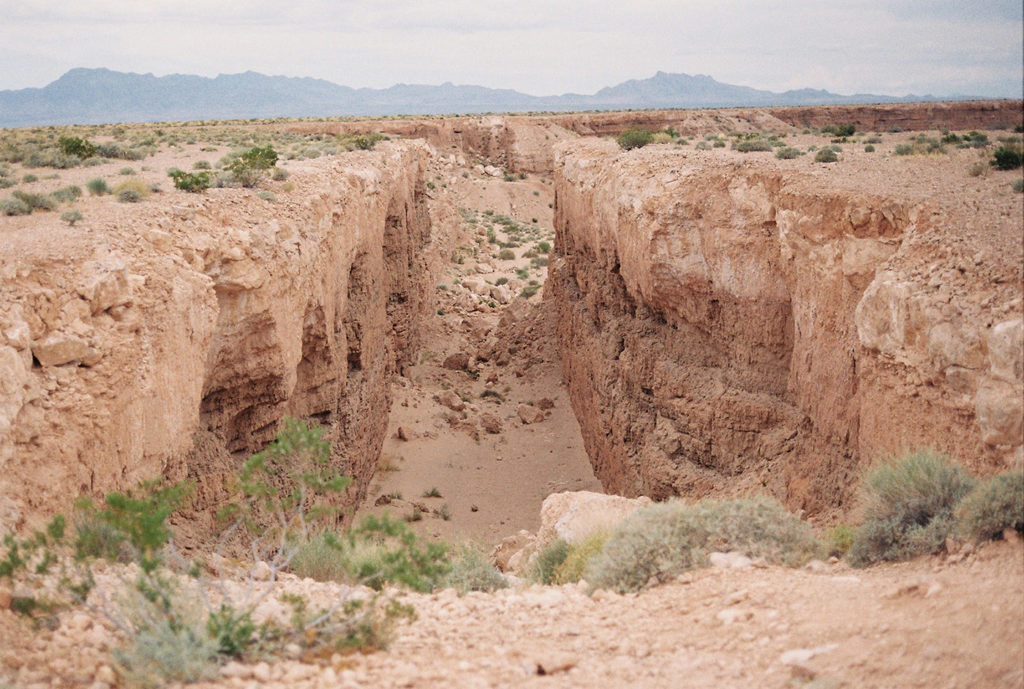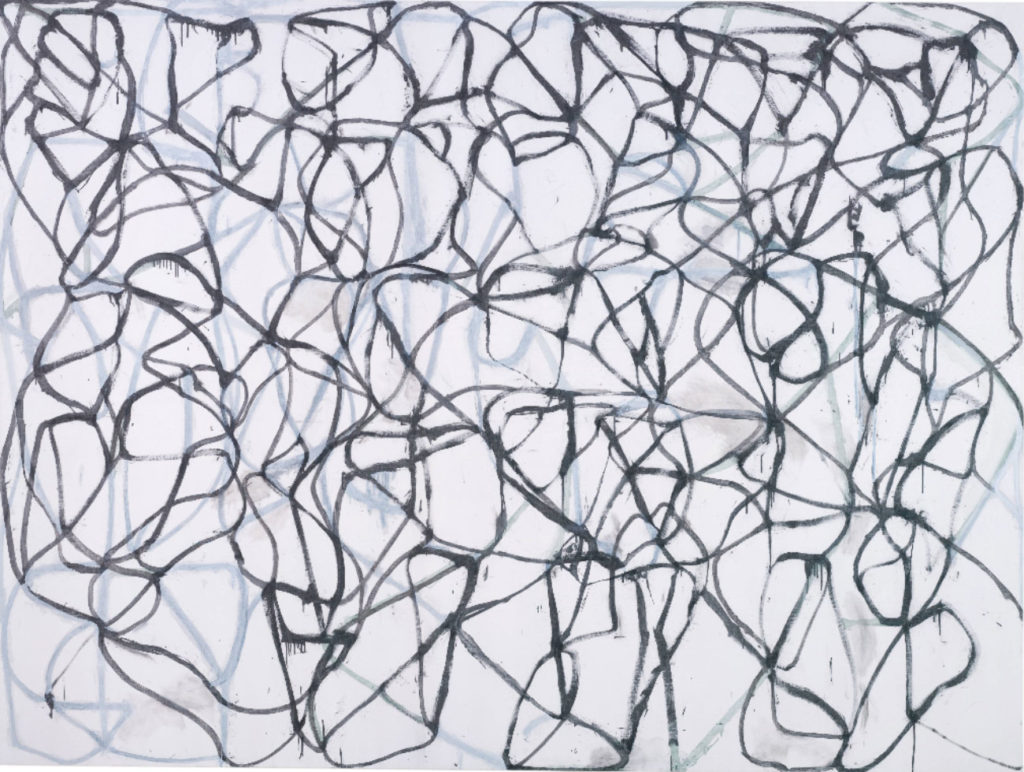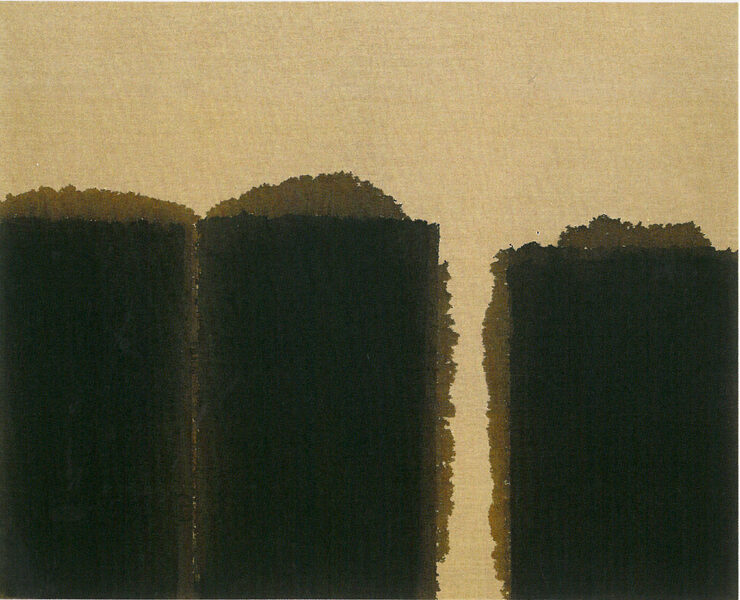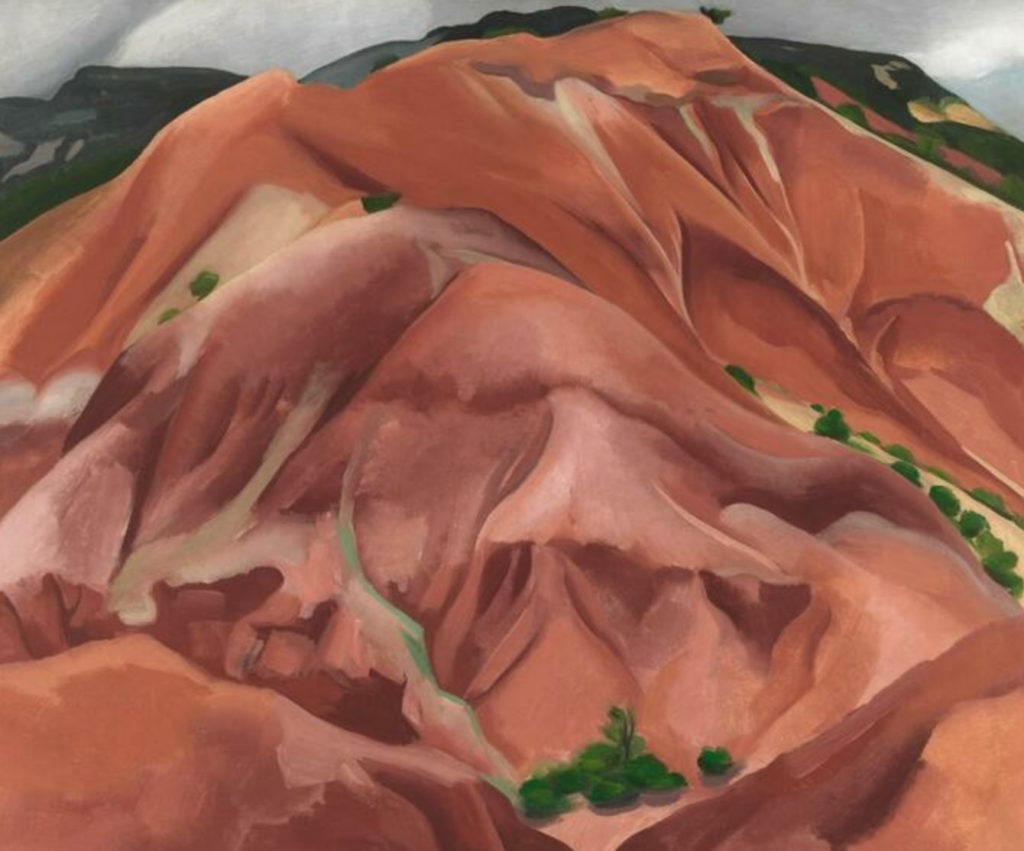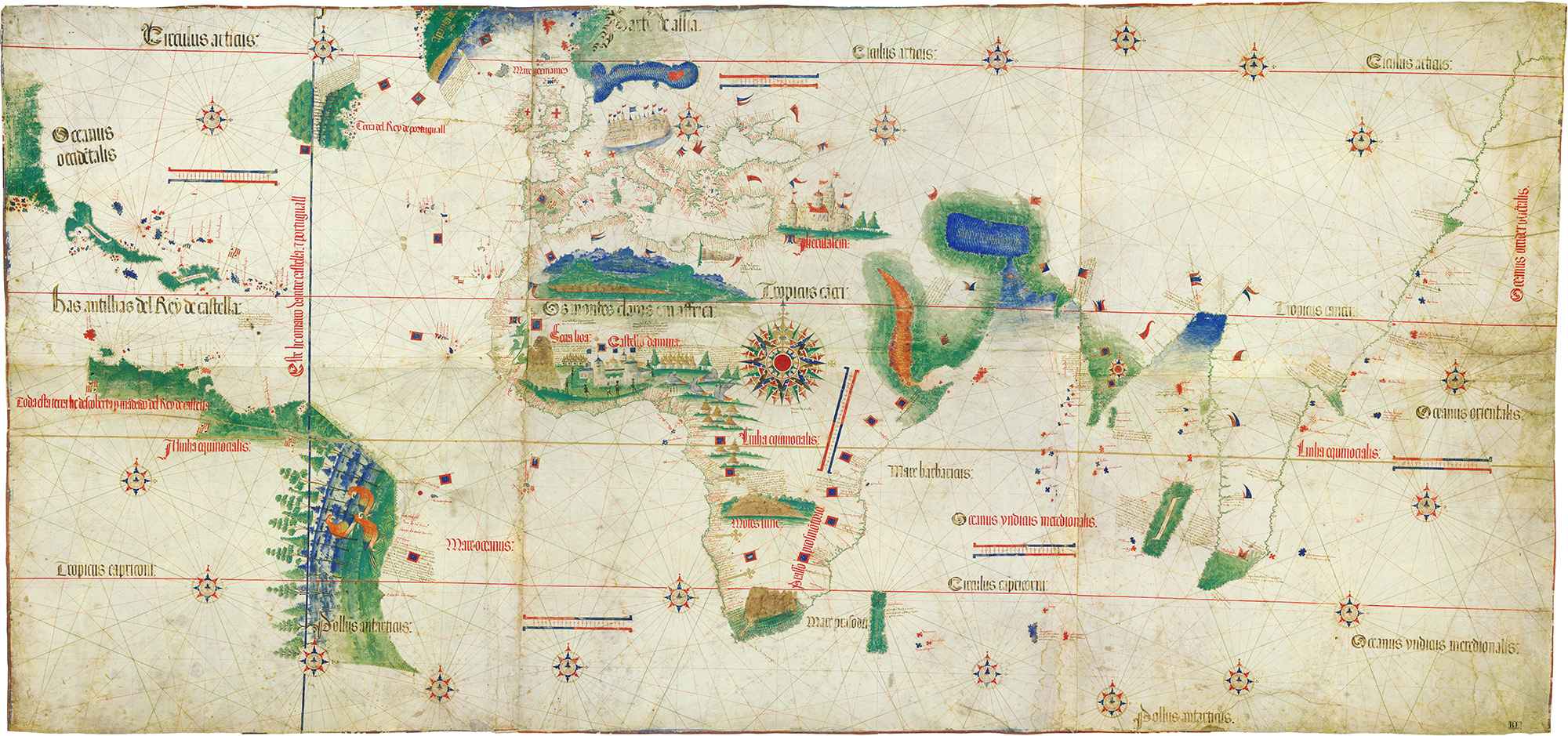
Geographical Imagination
지리학적 상상력
Text by Mimi Park 박상미
Photos by Hyuna Lee 이현아
Translation by Solha Kim 김솔하
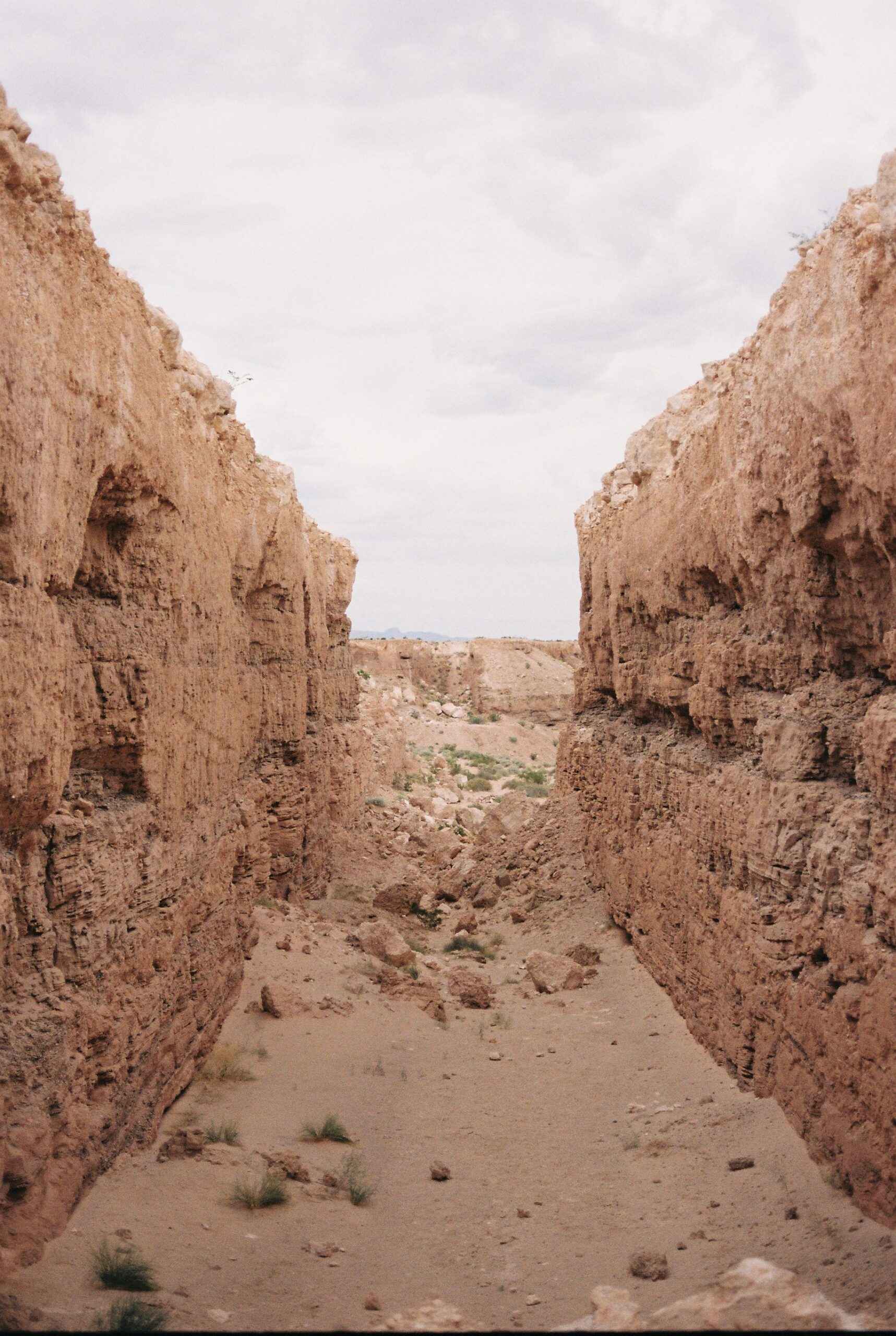
There is a place that I think of when talking of remote places, that I had actually visited once. It is Overton, Nevada, where American artist Michael Heizer's Double Negative is "installed." It is only an hour's north-eastern bound drive from Las Vegas, but in my memory it seems like the most remote place I ever visited. The village itself is isolated like an oasis in a desolate desert. Double Negative sat on a land where there was literally nothing, on the outskirt of Overton, which was not even properly marked on the map. While climbing the steep road to Mormon Mesa (mesa: flat-topped elevation like a tabletop), I almost felt like dying. The car was so heavily slanted that I was almost lying in the car, and the only thing I could see was the sky through the window. Don't they say you go up to the heavens when you die?
About his work, Michael Heizer had said, "There is nothing there, yet it is still a sculpture" and the "negative (sunken) space" itself, which was dug in a land where there was actually nothing, is his art piece. This work was 'created' in 1969 when land art was beginning to take form, consisting of two long trenches dug in the earth (each 30 feet wide, 50 feet deep) cutting into the tabletop of Mormon Mesa in a straight line. It is known to have been created by removing 240,000 tons of sandstone. The villagers there still talk about how many trucks had to move the rocks and sand. This all seems amazing and crazy, but when you see the aerial photograph, it looks just like a fingernail mark on something like a piece of clay. It seems that a silly human being who likes the idea of scratching the surface of the Earth while he was living on it actually pulled it off, a practical joke.
When you actually walk into the trench, there are only sand, stones, and weeds, so it does not even feel like it was actually made by men, let alone an artwork. As Heizer rightly noted, there is nothing there. The title Double Negative probably came from the fact that two linked sunk reliefs (negative spaces) make a single piece connected by this huge empty (negative) space in between. It could also mean that he did something on the flat land where there is nothing by adding nothing. I was so dumbfounded by this overwhelming state of nothingness, that when I tried to go back I had totally lost my sense of orientation and had no clue where I was. I had thought that my helpless state had lasted quite a long time, but I don't know if the time in which I actually felt lost was either 10 minutes or about 15 seconds. It felt like being held at eternal limbo where time has stopped, like some kind of panic attack. Hence my strong impression of Double Negative is the lonely feeling I had while climbing up the mesa, and then the stifling fear I felt while I lost my whereabouts.

It is scary when you don't know where you are. It could be frightening to death. The sense of space seems to be related to something essential that makes humans human. The hippocampus in the human brain is known to control long-term memory. According to the book Wayfinding: The Science and Mystery of How Humans Navigate the World (2019, M.R. O'Connor), neurologists explain that the hippocampus is in charge of 'navigation, orientation, and mapping' as well as long-term memory. They also say that only humans are capable of creating self-identity, by chronologically saving memories in the hippocampus. Perhaps this is why patients of Alzheimer's disease lose their memory, get lost, and even forget who they are. According to this book, "the hippocampus is the locus of autobiography… It is also the engine of our imagination." This is the moment I can finally understand how Homo sapiens had traveled afar from Africa to Europe and other continents and evolved into current human beings.
The moment I felt I was totally lost, I continuously searched for any references in my surroundings that I could recognize, whether there was a certain rock on my way up, whether I had seen the mountain. In order to find out where I was, I had instinctively looked for the location of other things. Therefore my location can be perceived in its relation to other things, when I am aware of the distance and orientation of a certain point or landmark around me. Knowing where I am through the relation with other things, being curious beyond it, and finding a path, this must be what humans do. This is true physically and metaphorically, but also in the realm of imagination.
❝
Knowing where I am through the relation with other things,
being curious beyond it, and finding a path,
this must be what humans do.
❞
The impossibility of getting lost thanks to GPS means that the chances of getting lost or finding a path are decreasing. If we do not try to look for the road, wouldn't our hippocampus lose its capacity? Moreover, we are more isolated than ever due to the pandemic. Even if I stay in one spot, in isolation there are moments when I get confused where I am. If I am living in an apartment in a new satellite city 30km south of Seoul, I would be able to tell my location. But do I truly know where I am? What lived here 2,000 years ago, who are my current neighbors, and what is the wind carrying? What kinds of dreams does one dream in this place, and do the minerals of this land change an element in my dream? While walking, or in my imagination, how far did I go today and whom did I meet, what did I talk about, and did I get lost once again?
지리학적 상상력
지금부터 1년 전, 뉴욕에서 록다운이 시작된 후 한 친구가 <외딴 섬들의 포켓용 아틀라스: 가보지 않았고 앞으로도 못 가볼 50개의 섬Pocket Atlas of Remote Islands: Fifty Islands I Have Not Visited and Never Will>이라는 책을 보내주었다. 지구 위 망망대해에 흩어져 있는 외딴 섬들을 떠올리니 그 스케일감이 대단했다. 그때 막 엄청난 고립 생활을 시작했던 나였다. 근데 이 섬들은 나보다 훨씬 더 고립되어 있었다. 그게 위안이 되었는지는 모르겠지만, 이 섬들을 보며 고립이라는 걸 생각하다 보니, 고립감은 나에게 닥친 현실이기보단 생각해봐야 할 사안처럼 느껴졌다. 나는 예전부터 지도책 보는 것을 좋아했는데, 요즘은 전체 여정을 조망할 수 있는 지도 대신 GPS에 주로 의존하게 되니 종종 답답해지곤 했다. 이 책의 외딴 섬들은 내가 앞으로 가보기는커녕, 지도에서조차 보기 힘든 섬들일 것이다. 갈 수도, 알 수도 없는 장소들이라 이 책은 존재의 불가능성에 천착한 산문시 같았다.
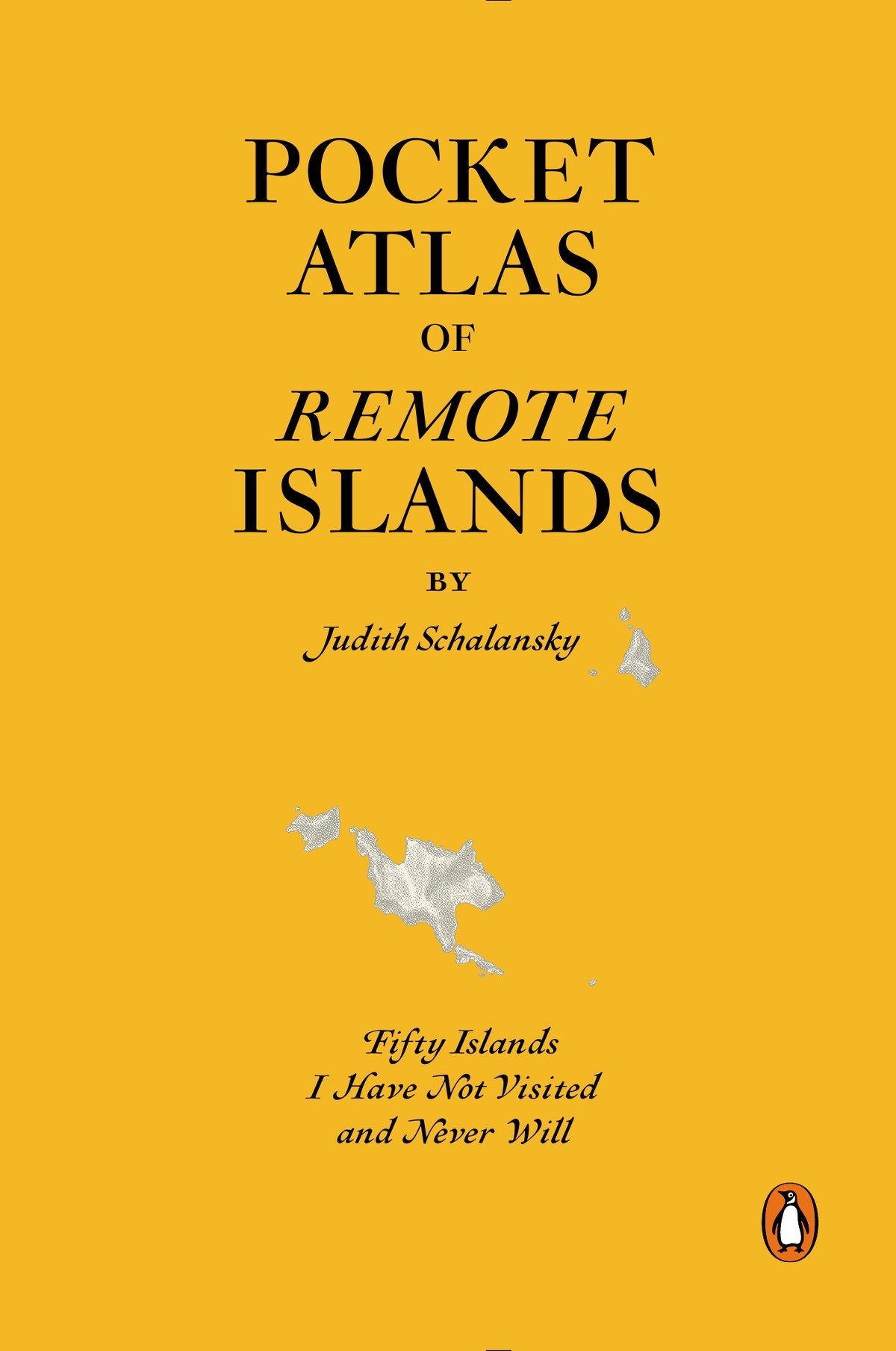
책장을 넘기며 내가 아는 섬들이 있나 보았는데, 나폴레옹이 유배되었다가 세상을 떠난 섬, 세인트 헬레나가 있었다. 이름만으로 알던 이 섬이 얼마나 외딴곳에 있는지 알고 놀랐다. 남대서양 한가운데, 서아프리카 해안에서 1,800km 넘게 떨어져 있다니, 유럽 대륙을 정복하고 러시아까지 진출했던 나폴레옹은 얼마나 고립된 채 죽었는가. 저자는 서문에서, 이 여정을 통해 '발견되지 않고 남아있었더라면 좋았을 섬들- 심란할 정도로 멀고 척박한, 다만 그 위에서 벌어진 비극적인 일들로 풍성해진 섬들'을 보았다고 말한다. 실제로 그 모습을 찾아보니 화산 폭발 때문인지 거칠어 보이지만, 그렇다 해도 그리 특별할 것이 없는 한 조각의 땅일 뿐이었다. 내가 나폴레옹의 위인전을 읽은 건 아마 열세 살 때쯤이었을 것이다. 오래전 읽었지만 나폴레옹이라는 역사적으로 대단한 인물이 코르시카 섬에서 태어나 세인트 헬레나 섬에서 죽었다는 사실은 잊히지 않았다. 몇 년 전까지 윌리엄스버그에 세인트 헬레나라는 레스토랑이 있었는데, 나는 그곳에 자주 갔고 종종 나폴레옹을 생각했다. 어쩌면 세인트 헬레나 섬이 그토록 멀리 있었기에 일찍 알게 되었는데, 고립되고 나니 그 먼 섬을 또 보게 된다.
내가 직접 가본 곳 중 외딴곳 하면 생각나는 곳이 있다. 미국의 미술가 마이클 하이저의 더블 네거티브Double Negative가 '설치'된 네바다 주의 오버튼이란 곳이다. 라스베이거스에서 북동쪽으로 한 시간 정도밖에 떨어지지 않았지만, 내 기억 속에선 가장 외딴곳일 것이다. 오버튼이라는 마을 자체도 사막의 오아시스처럼 척박한 벌판 위에 오롯이 자리 잡은 마을이었다. 더블 네거티브는 오버튼 외곽, 지도에 표기도 제대로 되어있지 않은 아무것도 없는 땅 위에 있었다. 가파른 길로 모르몬 메사(꼭대기가 테이블처럼 평평하게 융기한 땅)에 올라갈 때는 마치 죽는 기분이었다. 몸이 누울 정도로 차가 기울고 그 밖으론 하늘밖에 안 보였기 때문이다. 죽을 때 하늘나라로 간다고 하지 않는가. 마이클 하이저가 자신의 이 작업을 두고 "거긴 아무것도 없지만, 그래도 그것은 조각이다."라고 했는데, 실제로 아무것도 없는 땅 위에 새긴 '음각' 자체가 작업이다. 하이저가 대지예술이 시작된 무렵인 1969년 '제작'한 것으로, 모르몬 메사 위에 큰 간격을 사이에 두고 한 줄로 이어지는 두 개의 기다란 참호 같은 구덩이를 판 것이다. (각각 너비 30피트 깊이 50피트이다.) 그때 파낸 모래흙만 24만 톤이었다고 한다. 동네 사람들은 아직도 얼마나 많은 트럭이 모래흙을 날랐는지 이야기한다. 엄청나고 미친 짓 같지만, 이 작품을 상공에서 찍은 사진을 보면 꼭 손톱자국 같다. 하이저라는 괴짜 인간이 지구에 사는 동안 손톱자국이나 내보자는 심산으로 한, 하찮은 장난처럼 보인다.

실제 이 참호같이 생긴 구덩이에 들어가 보면 모래와 돌덩이와 잡초밖에 없어 예술 작품은커녕 사람이 만든 것처럼 느껴지지도 않는다. 하이저의 말대로 아무것도 없다. 더블 네거티브란 이 작업의 제목은 두 개의 음각(네거티브 스페이스)이 이어져 하나의 작업을 이룬다는 의미 외에도, 아무것도 없는 평평한 대지 위에 뭔가를 더 없애서, 그러니까 없음에 없음을 더해 조각을 만들었다는 의미가 있을 수 있겠다. 뭔가 너무나 없는 이 상황에 압도되어서 멍하게 있다 보니 막상 내려가려고 했을 때는 지남력을 완전히 상실한 채 어디로 가야 하는지 알 수가 없었다. 나는 한참이었다고 생각됐지만, 실제로 길을 잃었다고 생각한 시간이 10분이었는지 아니면 15초쯤이었는지 알 수 없다. 공황 상태처럼, 시간이 정지한 영원한 림보에 갇혀있는 느낌이었다. 실제로 더블 네거티브라는 작업에 대한 나의 가장 강렬한 감상은 메사 위로 올라갈 때 느꼈던 외로운 느낌과 나중에 방향 감각을 잃었을 때 느낀, 이 숨 막히는 공포감이었다.
내가 어디 있는지 모를 때 사람은 두려워진다. 죽을지도 모른다는 공포감에 사로잡힌다. 공간에 대한 감각은 인간을 인간이게 하는 본질적인 부분과 연관되는 듯하다. 인간의 뇌 속 해마는 장기 기억을 담당하는 것으로 알려져 있는데, <길 찾기Way finding>라는 책에 따르면, 뇌신경학자들이 주장하길 해마에서 장기 기억뿐 아니라 '길 찾기, 지남력, 공간인지력navigation, orientation, and mapping'을 담당한다고 한다. 또 해마에 저장된 기억을 시간의 연속선 상에 저장해서 자기 정체성을 쌓는 것도 인간뿐이라 한다. 알츠하이머 환자들이 기억과 함께 길을 잃고 자기가 누군지도 잊는 게 이런 이유에서일까. 이 책에 의하면 '해마는 우리의 자서전이 저장되어 있는 장소이다… 또한 우리의 상상력을 작동시키는 엔진이기도 하다'라고 했다. 호모 사피엔스가 어떻게 아프리카에서 나와 유럽과 다른 대륙으로 진출하고 지금의 인류로 진화했는지 이해가 가는 순간이다.
완벽하게 길을 잃었다고 생각한 순간, 나는 주변에 알아볼 수 있는 무언가 있는지, 올라오던 길에 돌이 있었는지, 멀리 산이 보였는지를 끊임없이 찾았다. 내가 어딨는지 알기 위해 본능적으로 다른 것들의 위치를 찾은 것이다. 그러니까 나의 위치는 내 주변 감지할 수 있는 어떤 지점이나 랜드마크의 거리와 방향을 알 때, 즉 다른 것들과의 관계 속에서 파악되는 것이다. 다른 것들과의 관계 속에서 내가 어디 있는지를 알고, 그 너머를 궁금해하고, 그리고 길을 찾아가는 것, 그것이 인간의 일일 것이다. 이는 물리적으로, 비유적으로도 그러하지만, 상상 속에서 또한 그러하다.
❝
다른 것들과의 관계 속에서 내가 어디 있는지를 알고,
그 너머를 궁금해하고, 그리고 길을 찾아가는 것,
그것이 인간의 일일 것이다.
❞
GPS 덕에 길을 잃을 수가 없다는 것은 길을 잃거나 찾는 기회가 갈수록 줄어든다는 것을 의미하기도 한다. 길 찾기를 하지 않다 보면 우리의 해마도 쇠퇴하는 것이 아닐까? 게다가 우리는 팬데믹으로 그 어느 때보다 고립되어 있다. 한 장소에 있어도, 고립되어 지내다 보면 오히려 내가 지금 어디에 있는지 헷갈리는 순간이 있다. 내가 만약 서울에서 남쪽으로 30km 떨어진 신도시의 한 아파트에 살고 있다면, 나의 위치를 말할 수 있을 것이다. 하지만 나는 진정 어디에 있는가? 2천 년 전 이곳엔 무엇이 살았으며, 지금 나의 이웃들은 누구이며, 바람은 무엇을 나르고 있는가? 이곳에서 누가 어떤 꿈을 꾸며, 이 땅의 미네랄은 나의 꿈의 성분을 바꾸는가. 걸어서, 또는 상상 속에서, 나는 오늘 얼마나 멀리 가서 누구와 만났고, 어떤 이야기를 나누었고, 또 한 번 길을 잃기도 했는가.
Mimi Park
Writer, Translator/
Creative Director at CLUMSY and TPNY
박상미
작가, 번역가/
클럼지, TPNY의 크리에이티브 디렉터

RELATED POSTS
